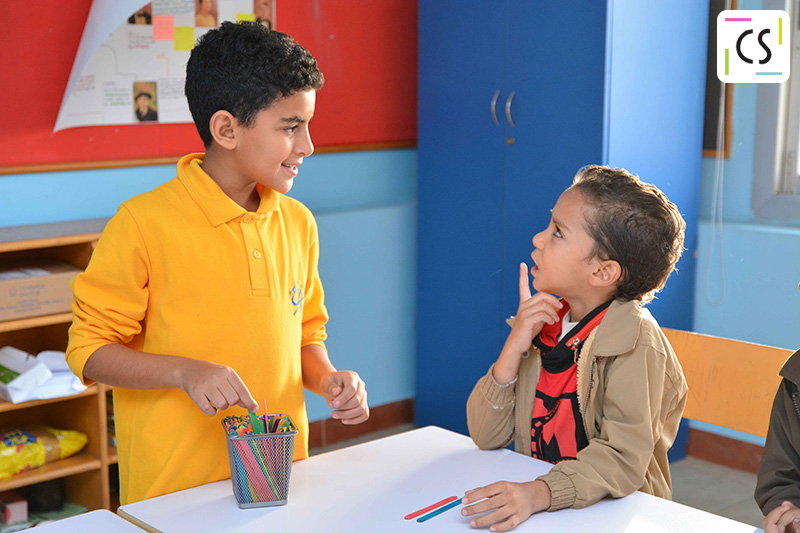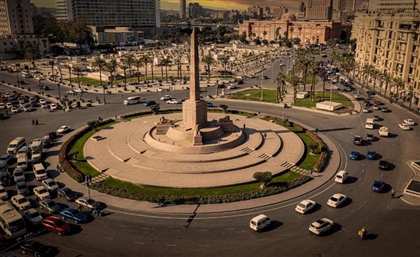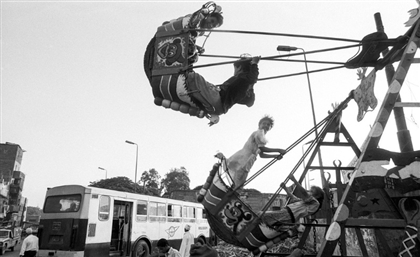The Children Shattering Egypt's Class Division
Eihab Boraie returns to El Alsson private school to explore their English programme where the private school students become the teachers, giving underprivileged kids a chance to better their future.

Last year my preconcieved notions of Egypt’s class division were not just challenged, but shattered as I had the great fortune of meeting the big hearted students at El Alsson private school. While other children choose to spend their free time connecting and communicating through a variety of handheld devices, the El Alsson students conversely choose to spend their lunch breaks giving back to Egypt and getting in touch with the reality of their surroundings, feeding the helpless neighbourhood street dogs. Expanding on their humanitarian work, the caring students at El Alsson are looking beyond the plight of animals and have turned to teaching English and making clothing for the many underprivileged kids in the Sakkara neighourhood where the school resides.
As a majority of students rush to leave by three, a group of eager yet impoverished children patiently await outside the school gates. Once all the buses have left, only a few passionate El Alsson students remain, sacrificing their own time to give the less fortunate the opportunity to build a better future by teaching them English. Overseeing and helping organise the programme is the wonderful Julie Clarke. “The initative started two years ago as attempt to bridge the huge divide between the rich and the poor,” explains the assistant principal.

At the time, Clarke and her patriotic students were spending one afternoon a week feeding neighbourhood dogs outside the school’s gates. For many of the deprived children living in the area, the sight of wealthy children feeding ‘balady’ dogs seemed bizarre and instantly piqued their young curiousity. As the extremes of the future generation's wealth divide met, friendships were made and class barriers were broken as the children began understanding that they weren’t that different from one another. A genuine eye-opening experience for all involved, one surprised student remarked: “Oh my God, Ms. Clarke - they have the same dreams we do.” In hopes of helping them achieve their dreams the El Alsson students and their teachers decided to create an after school programme on Tuesdays where the students become teachers and help anyone in the neighbourhood interested in learning English.
Guiding me from class to class was multi-tasking expert and geography teacher Chantal Clarke. Supervising the programme this year, she explains that the toughest challenge is that "the village children don’t have the kind of classroom, manners or rules that these student teachers have. The teachers assume that all the kids will stay in their seat, but that becomes tough to manage with a large class. One week we will see a hundred students show up and then the next week we will have 20. The average is around 40 students every week and through trial and error we have decided that the best format for all involved is to limit each teacher to only six-students per class.”

The first classroom we visit, I meet Habiba, a determined teen with a lesson plan. Graciously taking a few minutes she passionately explains "I feel like I have made a true connection and you can see there is progress. It took us a year to distinguish between B and P, but we did it and I hope to continue teaching in the programme and having them having a conversation in English before I graduate." Impressed by her desire and strict lesson plan, I carried on observing a variety of classes until I stumbled upon one student turned teacher I remembered from my previous El Alsson dog feeding excursion.

13-year old Annie has been teaching in the programme from the start and had met some the students when she goes out to feed the dogs. "El Alsson is an amazing community, it feels like a family, and I wanted to do my part to help the community both inside and outside my school." As a veteran of the programme, Annie explains that the biggest challenge is “adapting a lesson plan to account for missing students or having too many students and making sure to give everyone attention. Some kids learn faster than other, I have one 3-year old student in my class, but I feel like the younger they are the easier it is for them to learn. The key is making it fun.”
While Annie’s class learns about all the different type of English greetings, Youssef’s lesson plan differs as today he focuses on teaching all the English words associated with the game of football. “I see that we have the opportunity to learn and better ourselves while these kids don’t have the money or the opportunity for a better life and a better education. We’re blessed and they're not which is not their fault! So we should do all we can to help them, because they deserve the chance to make their lives better,” describes Youssef about teaching in the programme.

With kids as young as three coming to learn I began to wonder who is responsible for gathering up all the children in the neighbourhood every week. That is when I met Mohammed, a local teen who was too shy to talk to me initially, but was willing to tell his friend about why he gathers the children every week to partake in the programme, despite not taking part himself. “I pass by around 2pm and pick them up and bring them over, if someone is late I go or send someone over to let them know we're about to start. Some of the kids are really young and don’t realise that learning English is valuable and can help them get better jobs in the future,” Mohammed explains. Despite not knowing any English, Mohammed takes on the role of making sure all the other kids seize the opportunity, which he wished would have been offer when he was younger.

Passing each classroom it became obvious that all the students were taking the responsibility of teaching seriously. Gathering for a group photo at the end of the day, Clarke informs that the programme has once again expanded beyond just teaching. “This year a knitting club was established and once a week El Alsson students get together and are in the process of knitting many of the village children clothing. One parent who was inspired by the change their kids are making decided to get involved and has donated 50 customised jumpers for the regular attendees of the English teaching programme,” she explains.

As the kids returned to their respective homes, I left the school feeling inspired and optimistic about Egypt’s future. Typically Egyptians often wait for somebody to come along and fix all the problems troubling this ancient land. However at El Alsson, the philosophy seems to be why wait, as their community of students are passionate in proving that, despite their age, they can make a real difference in the lives of the unfortunate. Instead of waiting for change, these inspiring children are becoming the change they want to see in their surroundings giving hope that Egypt can return to its former greatness.
Photography by Eslam 'Siso' Ahmed.
- Previous Article Four Seasons Hotel Cairo at Nile Plaza Wins Big
- Next Article Mahmoud Refaat: Bringing Noise
Trending This Week
-
Apr 10, 2024
























